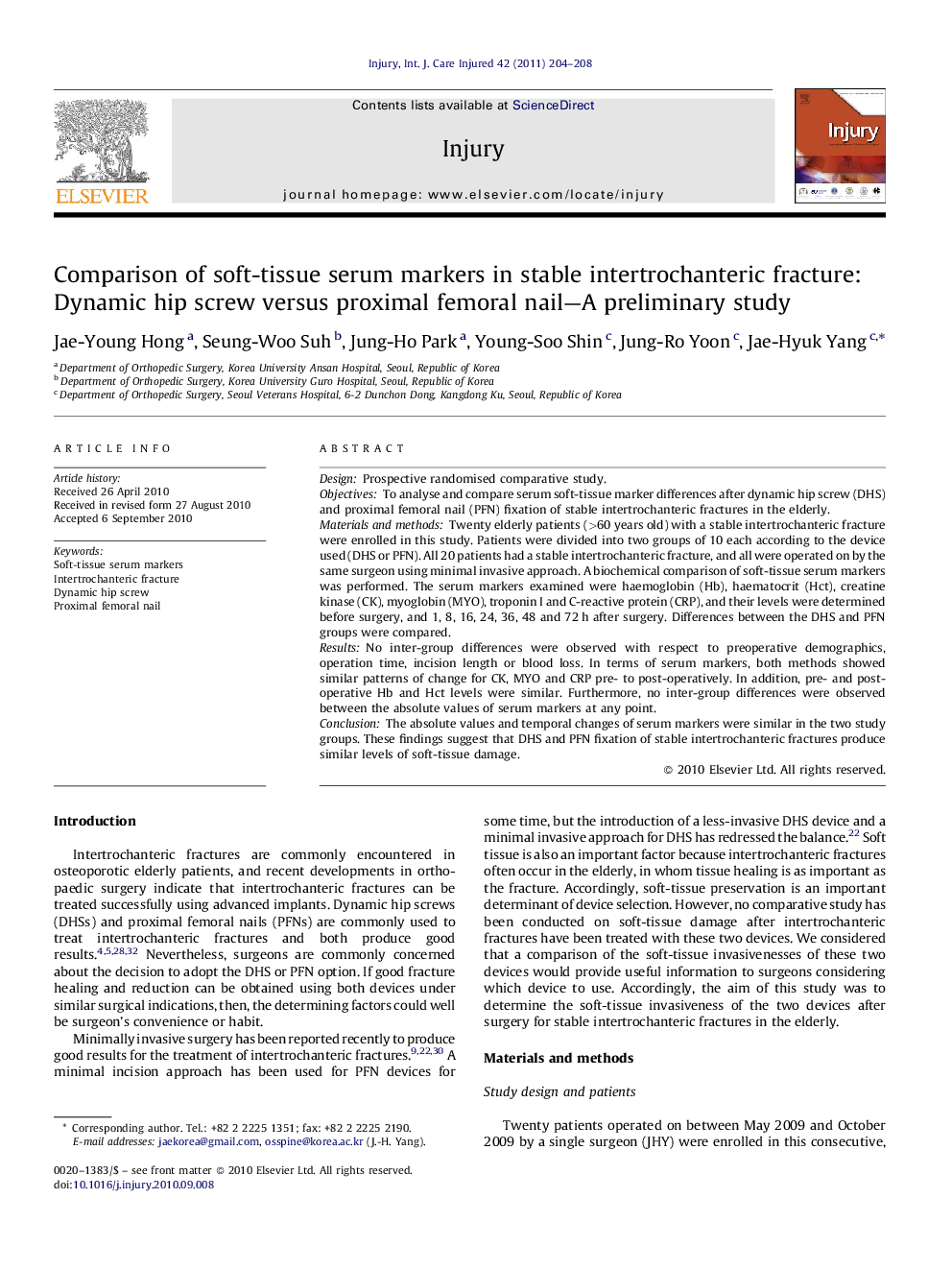| Article ID | Journal | Published Year | Pages | File Type |
|---|---|---|---|---|
| 3241206 | Injury | 2011 | 5 Pages |
DesignProspective randomised comparative study.ObjectivesTo analyse and compare serum soft-tissue marker differences after dynamic hip screw (DHS) and proximal femoral nail (PFN) fixation of stable intertrochanteric fractures in the elderly.Materials and methodsTwenty elderly patients (>60 years old) with a stable intertrochanteric fracture were enrolled in this study. Patients were divided into two groups of 10 each according to the device used (DHS or PFN). All 20 patients had a stable intertrochanteric fracture, and all were operated on by the same surgeon using minimal invasive approach. A biochemical comparison of soft-tissue serum markers was performed. The serum markers examined were haemoglobin (Hb), haematocrit (Hct), creatine kinase (CK), myoglobin (MYO), troponin I and C-reactive protein (CRP), and their levels were determined before surgery, and 1, 8, 16, 24, 36, 48 and 72 h after surgery. Differences between the DHS and PFN groups were compared.ResultsNo inter-group differences were observed with respect to preoperative demographics, operation time, incision length or blood loss. In terms of serum markers, both methods showed similar patterns of change for CK, MYO and CRP pre- to post-operatively. In addition, pre- and post-operative Hb and Hct levels were similar. Furthermore, no inter-group differences were observed between the absolute values of serum markers at any point.ConclusionThe absolute values and temporal changes of serum markers were similar in the two study groups. These findings suggest that DHS and PFN fixation of stable intertrochanteric fractures produce similar levels of soft-tissue damage.
